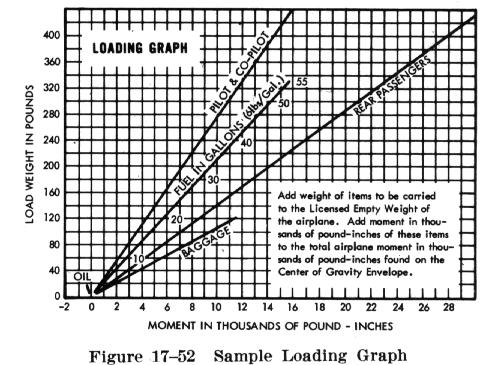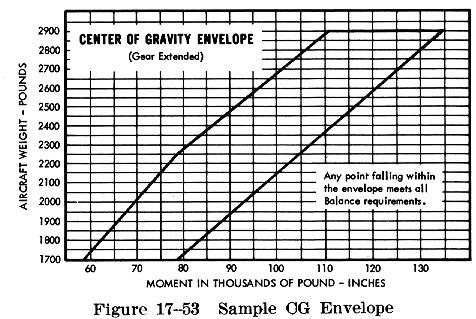| Weight and Balance Control
The aircraft manufacturer and the Federal Aviation Administration have major roles in designing and certificating the aircraft with a safe and workable means of controlling weight and balance. If the prototype aircraft has weight and balance control problems which are potentially dangerous or complicated, design changes must be made to ensure the airworthiness of the aircraft. When an airplane is placarded requiring that it must be flown solo from a specified seat, that a given fuel tank is to be emptied first, or that a compartment or seat is to be left empty under certain conditions, the pilot may rest assured that the placard is necessary for some well founded reason. Such placards must be maintained in the airplane and observed. Weight and balance control is a matter of serious concern to all pilots as well as many other people who are involved in the flight. The pilot has to personally assume the responsibility because he has control over both the loading and the fuel management, the two variable factors which can change both total weight and CG location. Weight and balance information is available to the pilot in the form of aircraft records, operating handbooks, and placards in baggage compartments and on fuel tank caps. It is the aircraft owner or operator's responsibility to make certain that up to date information is available in the aircraft for the pilot's use. It must be stressed that the empty weight and moment given in most manufacturers' handbooks are for the basic airplane prior to the installation of additional optional equipment. When the owner later adds such items as radio navigation equipment, auto pilot, deicers, etc., the empty weight and the moment are changed. These changes must be recorded in the airplane's weight and balance data and used in all computations. In addition, the actual weight of occupants, baggage, fuel, and other useful load should be used rather than the sample weights given in the manufacturers' handbooks. The owner or operator of the aircraft should ensure that maintenance personnel make appropriate entries in the aircraft maintenance records when repairs or modification have been accomplished, and when optional equipment (radios, etc) have been installed, or removed. Weight changes must be accounted for and proper notations made in the weight and balance records. Without such notations, the pilot has no foundation upon which to base his calculations and decisions. The airplane's latest Weight and Balance Loading Form and/or its maintenance record will list the empty weight, the useful load, and the empty center of gravity location. If it is possible to load the airplane out of center of gravity limits, it will also include a specific listing of the most forward and the most rearward allowable limits. This information should be consulted when a pilot proposes to load and fly an airplane with which he or she is not thoroughly familiar. Although seemingly complex at times, all weight and balance problems are based on the following moment equation: MOMENT = WEIGHT x ARM This equation is the basic equation used to find the center of gravity location of an airplane and/or its components. By rearrangement of this equation to the forms, Weight = Moment / Arm, and Arm = Moment / Weight (/ = divided by), with any two known values, the third value can be found. Weight and balance computations are sometimes simplified by two
graphic aids - the loading graph and the center of gravity moment envelope. The
loading graph (Fig. 17-52) is typical of those found in many general aviation
airplane owner's manuals. This graph, in effect, multiplies weight by arm giving
moment, then divides the moment by a redu 

For those who have a need for greater appreciation of weight and
balance control as it relates to safety of flight, a more comprehensive text on
the subject is contained in the FAA Advisory Circular 91-23A, PILOT'S WEIGHT AND
BALANCE HANDBOOK.
|
